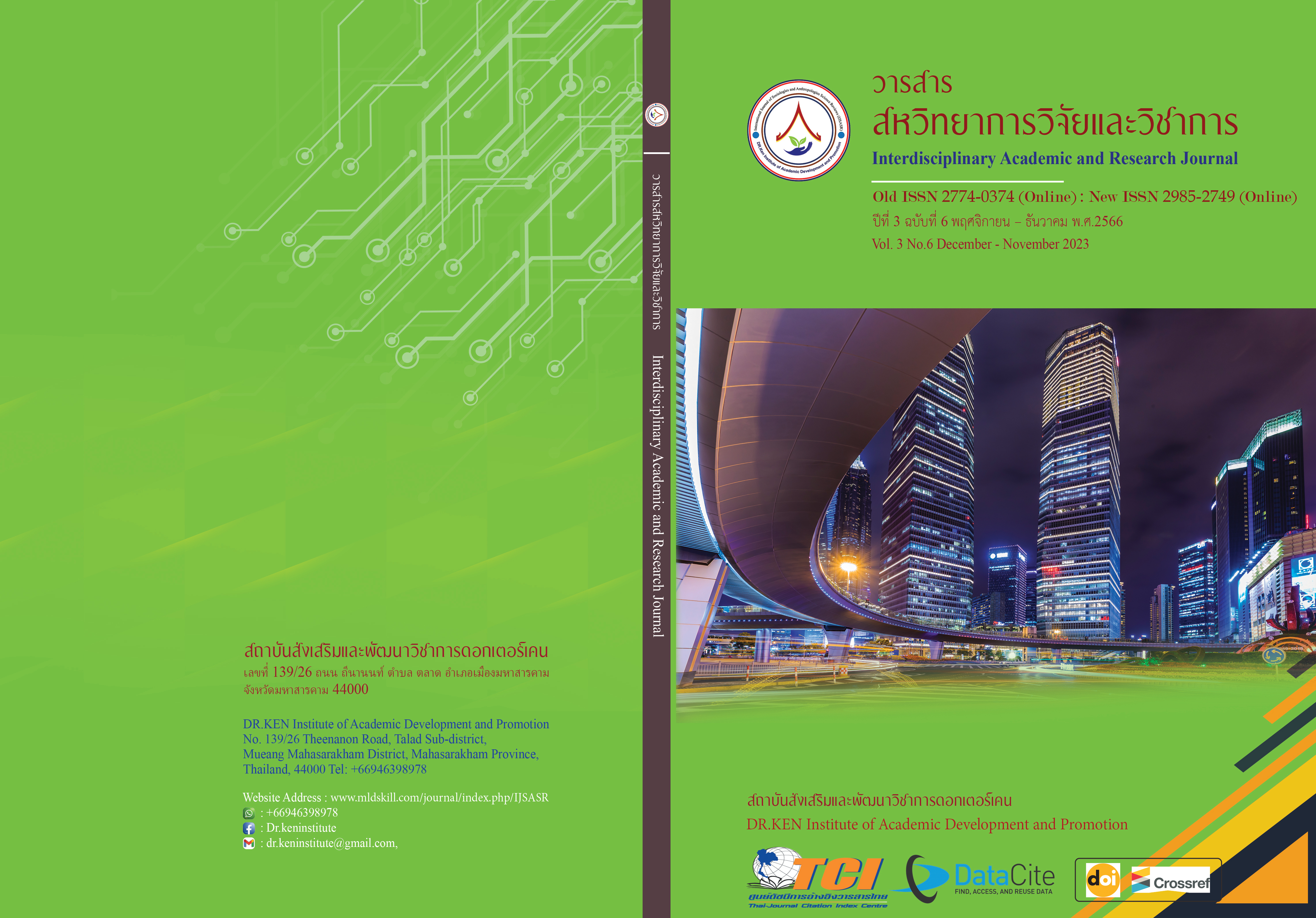Innovative Leadership of Educational Institution Administrators under the Lopburi Primary Educational Service Area 2
DOI:
https://doi.org/10.60027/iarj.2023.271718Keywords:
Leadership; , Innovative Leadership;, Educational Institution AdministratorsAbstract
Background and Aims: Innovative Leadership is an important competency that school administrators and teachers must have to create awareness and change attitudes, including the ability to transform oneself into an innovative leader, being able to learn new skills, and have a framework to develop oneself into an innovative leader who can bring creative ideas and turn them into actions to benefit the educational institution. Thus, the objectives of this research are to 1) study the innovative leadership of educational institution administrators. Under the Lopburi Primary Educational Service Area 2. 2) Compare the innovative leadership of school administrators Under the Lopburi Primary Educational Service Area 2. Classified by work experience and the size of the educational institution.
Methodology: The sample group used in the research included 306 school administrators and teachers. The research instrument is a 5-level rating scale questionnaire with a consistency index between 0.80-1.00 and a confidence value for the entire questionnaire of 0.81. Statistics used for data analysis include frequency, percentage, mean, and deviation. standard t-test and F-test.
Results: (1) Innovative leadership of educational institution administrators Under the jurisdiction of the Lopburi Primary Educational Service Area Office 2, the overall level is at a high level. (2) Educational institution administrators and teachers with different working experiences Have opinions on the innovative leadership of educational institution administrators Under the Lopburi Primary Educational Service Area Office 2, Overall, they are not different. (3) Educational institution administrators and teachers working in educational institutions of different sizes. Have opinions on the innovative leadership of educational institution administrators Under the Lopburi Primary Educational Service Area Office 2, Overall, they are not different.
Conclusion: The innovative leadership status of educational administrators in the Nakhon Sawan Education Area Office, District 2, is at a high level. Educational administrators and teachers with different work experiences have similar opinions on the innovative leadership status of administrators in the affiliated schools of the Nakhon Sawan Education Area Office, District 2. Similarly, there is no statistical difference in opinions among administrators and teachers working in schools of different sizes.
References
กระทรวงศึกษาธิการ. (2559). คู่มือการประชุมเชิงปฏิบัติการชี้แจงแนวทางการดำเนินงานโครงการโครงการสานพลัง ประชารัฐ ด้านการศึกษาพื้นฐานและการพัฒนาผู้นำ. กรุงเทพฯ : โรงพิมพ์คุรุสภาลาดพร้าว.
ชุติภรณ์ทัศนกิจ. (2566). ภาวะผู้นำเชิงนวัตกรรมของผู้บริหารสถานศึกษาในกลุ่มโรงเรียนเตรียมอุดมศึกษาพัฒนาการ. สาขาการบริหารการศึกษา คณะศึกษาศาสตร์ม หาวิทยาลัยรามคำแหง.
บุญชม ศรีสะอาด. (2553). การวิจัยเบื้องต้น. พิมพ์ครั้งที่ 8. กรุงเทพฯ : สุวีริยาสาส์น.
ปิยาภรณ์ พลเสนา และ พนายุทธ เชยบาล. (2564). ภาวะผู้นำเชิงนวัตกรรมของผู้บริหารสถานศึกษาที่ส่งผลต่อประสิทธิผลการปฏิบัติงานของครู สังกัดสำนักงานเขตพื้นที่การศึกษาประถมศึกษาบึงกาฬ 5. วารสาร มจร อุบลปริทรรศน์. 6 (1), 207-222.
ไพฑูรย์ แวววงศ์. (2566). ภาวะผู้นําเชิงนวัตกรรมของผู้บริหารสถานศึกษา สังกัดสำนักงานเขตพื้นที่การศึกษาประถมศึกษาหนองบัวลำภู เขต 1. อุดรธานี: วิทยาลัยพิชญบัณฑิต ประเทศไทย.
วิชญะ ประทุมมา กฤษฎา วัฒนศักดิ์ และ วิรัลพัชร วงศ์วัฒน์เกษม. (2566). ภาวะผู้นำเชิงนวัตกรรมของผู้บริหารสถานศึกษาตามความคิดเห็นของครูในสถานศึกษา สังกัดสังฆมณฑลนครราชสีมา. วารสารวิทยาลัยนครราชสีมา สาขามนุษยศาสตร์และสังคมศาสตร์. 17 (2), 272-288.
สำนักงานเขตพื้นที่การศึกษาประถมศึกษาลพบุรีเขต 2. (2566). บุคลากร สพป.ลพบุรี เขต 2. ลพบุรี: สำนักงานเขตพื้นที่การศึกษาประถมศึกษาลพบุรีเขต 2.
Hender, J. (2003). Innovation leadership: Role and key imperatives. London: Grist.
Krejcie, R.V., & Morgan, D.W. (1970). Determination of sample size for research activities. Education and Psychology Measurement, 30(3), 607-610.
Downloads
Published
How to Cite
Issue
Section
License
Copyright (c) 2023 Suwat Asasing, Chamrat Mungfaoklang, Sunthon Kohtbantau, Somdet Sawandee, Cheewin Boonthom

This work is licensed under a Creative Commons Attribution-NonCommercial-NoDerivatives 4.0 International License.
Copyright on any article in the Interdisciplinary Academic and Research Journal is retained by the author(s) under the under the Creative Commons Attribution-NonCommercial-NoDerivatives 4.0 International License. Permission to use text, content, images, etc. of publication. Any user to read, download, copy, distribute, print, search, or link to the full texts of articles, crawl them for indexing, pass them as data to software, or use them for any other lawful purpose. But do not use it for commercial use or with the intent to benefit any business.














.png)

